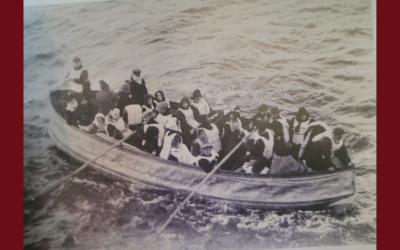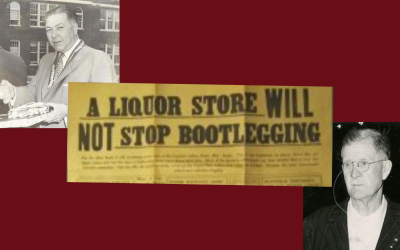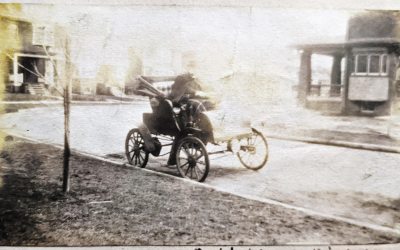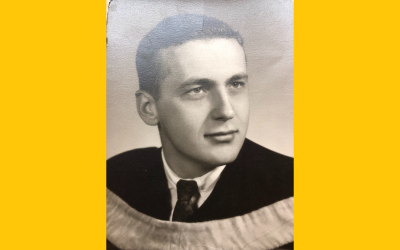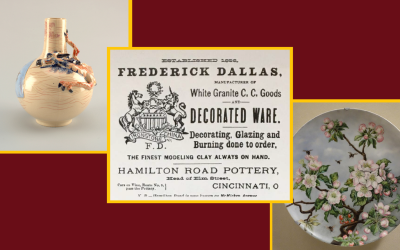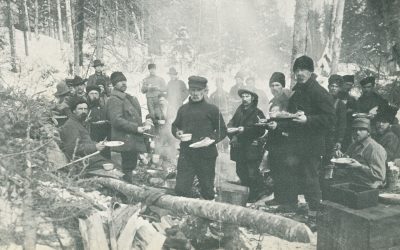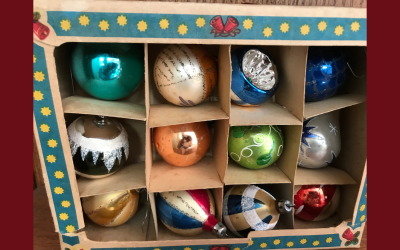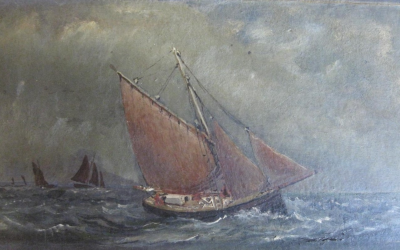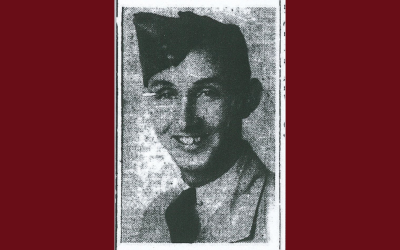THE TAITS OF ORILLIA
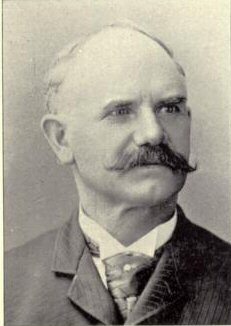
Andrew Tait, 1896. Photo from the Orillia Museum of Art & History Archives
By William Leslie, Guest Contributor
This is the story of the Tait family. William Tait, his wife, Mary and family left Scotland in 1848 for Canada, travelling from Liverpool to New York City, up the Hudson River and the Erie Canal. They finally crossed from Buffalo to Fort Erie, Upper Canada in 1860. Andrew Tait was 21 years old.
The Taits started a lumber business, in Fort Erie and Ridgeway. In 1863, Andrew Tait married Aurilla Howse, whose Loyalist family had a 200-acre land grant on the Niagara River. Andrew and Aurilla had three children, Albertha, Orland, and Alma Jane.
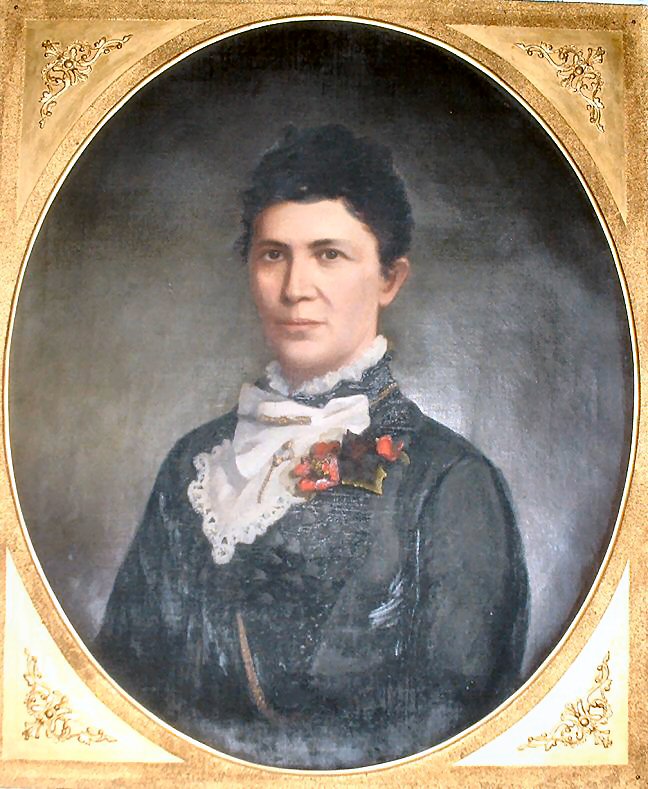
Portrait of Aurilla Tait. Photo from the Orillia Museum of Art & History Archives
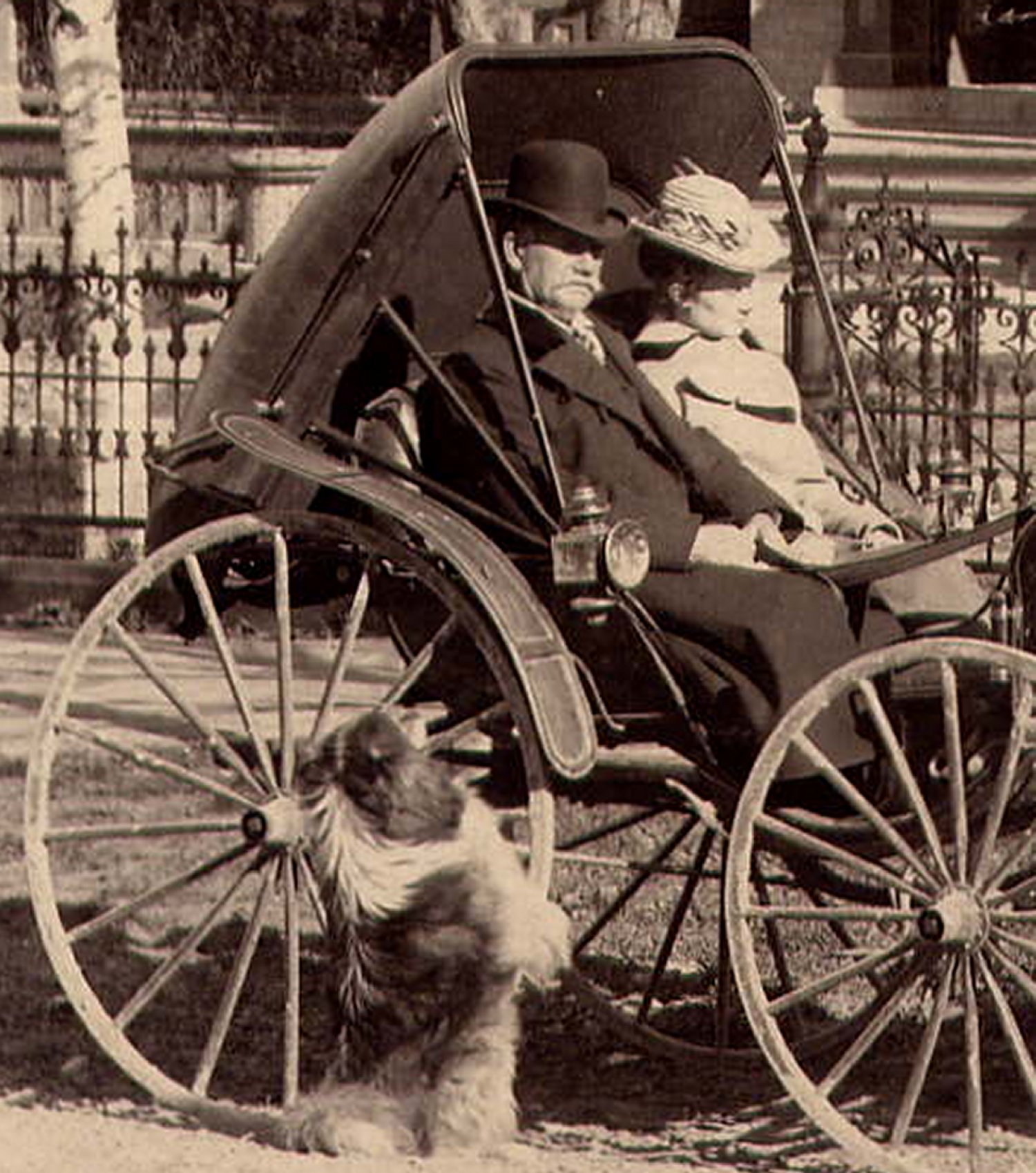
Andrew and Aurilla Tait at Glenorma Colborne Street, 1885. Photo from the Orillia Museum of Art & History Archives
In the year of Confederation, 1867, when Orillia was incorporated as a town, Andrew, Aurilla and their three children made Orillia their home. In 1871, two of their children died in the Orillia Diphtheria Epidemic. Their four other children were born in Orillia.
Andrew and Aurilla started with a hand-cranked shingle making machine in a shop on Andrew Street. Andrew cranked the machine and Aurilla tied the finished shingle bundles. They believed that this new town of Orillia was the place to make their way in the new country of Canada. Andrew was a pioneering and resourceful entrepreneur who built businesses, built houses and created hundreds of jobs in lumbering, quarrying, and building.
In 1934, at age 95, Tait was still building, buying, and selling and one way or another giving employment to a small army of men. He bought the land on Couchiching Point and Cedar Island and developed lots for holiday homes.
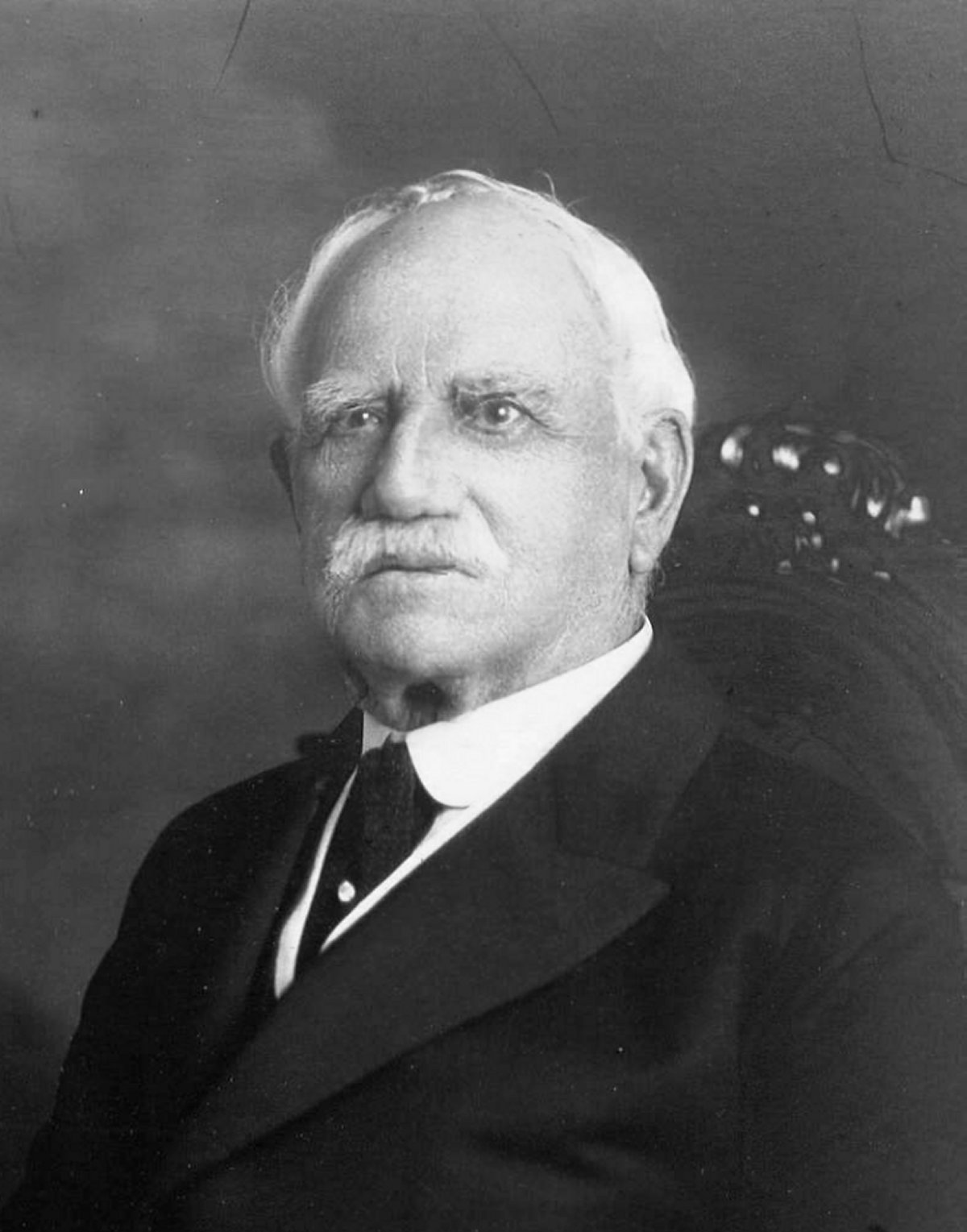
Andrew Tait on his 91st birthday, June 26, 1930. Photo from the Orillia Museum of Art & History Archives
The Orillia churches provided outlets for citizens to pursue their faiths, meet people, enjoy artistic presentations, fundraise for national and other causes, and assist one another. The Methodist Church presented plays to raise funds for soldiers in the South African War. Tait daughters, Alma and Clarisse, were musical and artistic and actively participated in these presentations.
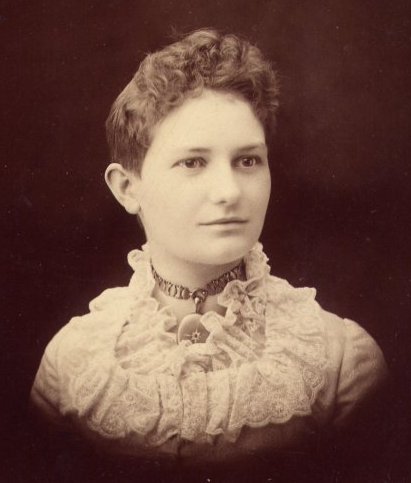
Alma (Tait) Wainwright, 1885. Photo from the Orillia Museum of Art & History Archives
In 1870, Andrew Tait was a major donor of funds to build the new St. Paul’s United Methodist Church. Alma Jane became the organist and a member of the choir and met Edward Wainwright the choirmaster. They were married in 1892.
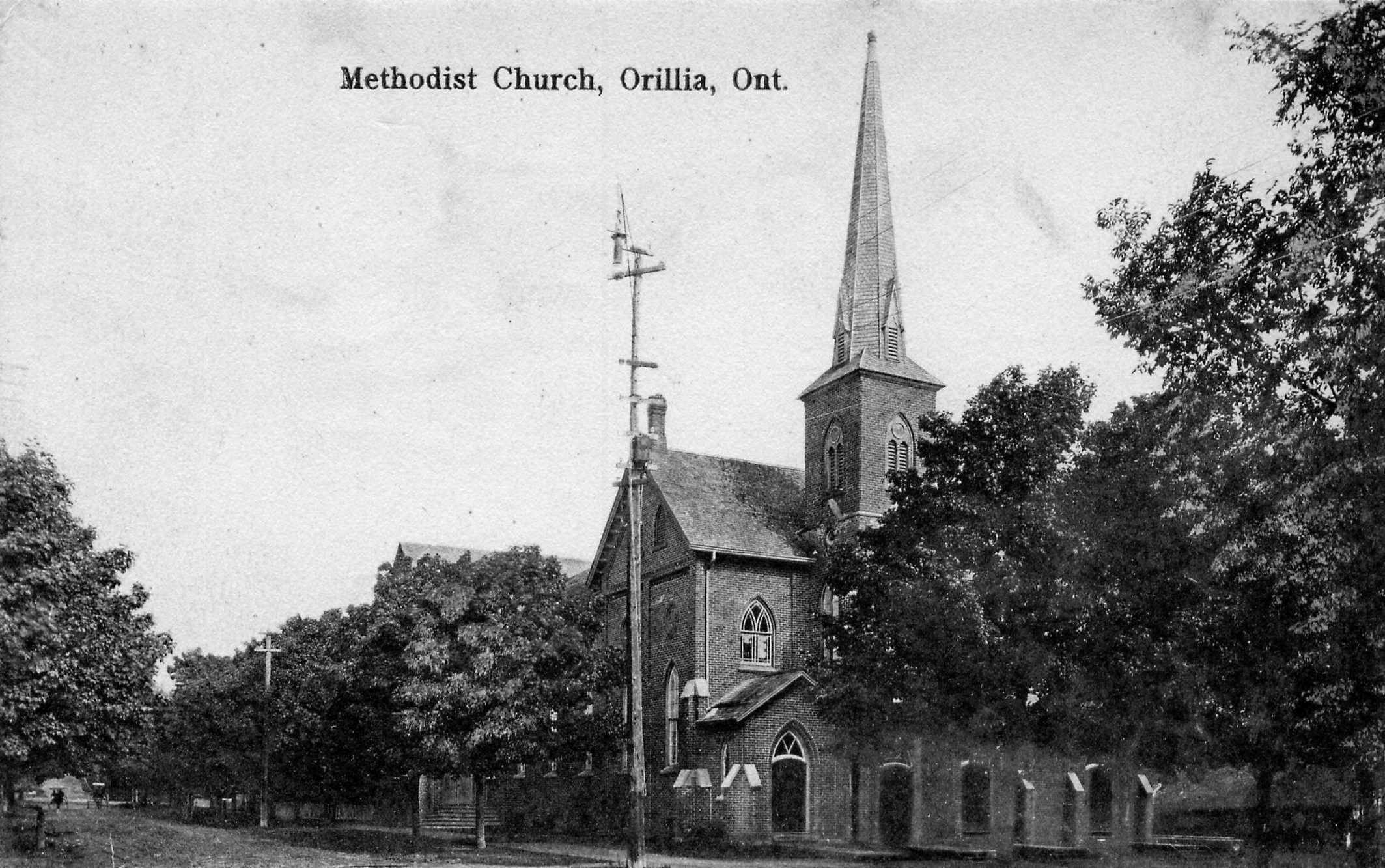
St. Paul’s United Methodist Church. Photo supplied by Marcel Rousseau
Clarisse married Sidney Carss, whose family had a store on Mississaga Street. Sidney joined the Tait Lumber Company and took it over when Andrew Tait moved to the Huntsville Lumber Company.
During the lumber boom in Orillia, the 29 bars gave the town a reputation as a “log and grog” town. It was a brawling rowdy place. Tait and other Methodists were active in the temperance movement and The Canada Temperance Act of 1878 resulted in the closing of all the bars.
In 1885, in his mansion Glenorma, Andrew Tait built a roller-skating rink on the top floor for his daughters to entertain their friends so that they would not go to dances in town.
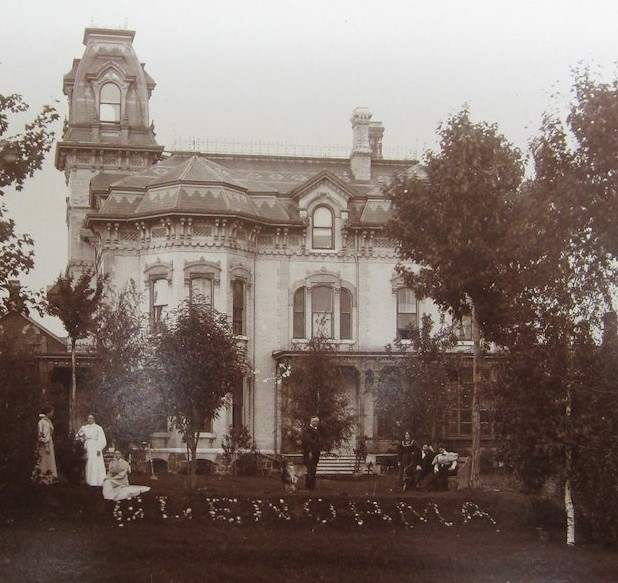
Glenorma. Photo from the Orillia Museum of Art & History Archives
About 1886, he bought a 75-foot steam yacht, Gypsy, and built a boat house where he and some friends formed the Orillia Yacht and Canoe Club. This Club provided opportunities for healthy competition and socializing. In 1900, Alberta, an expert canoeist, won a gold medal in Ladies Canoeing.
The Taits were pioneers who had a tremendous impact on the early foundations of Orillia and in many ways their legacy lives on today. In 1992, one of the Tait millworker’s houses that was built in 1889, located at 52 Scott Street, was registered as a designated property under the Ontario Heritage Act. The two-storey, red brick house was the only remaining example of a millworker’s house in its original condition on Scott Street.
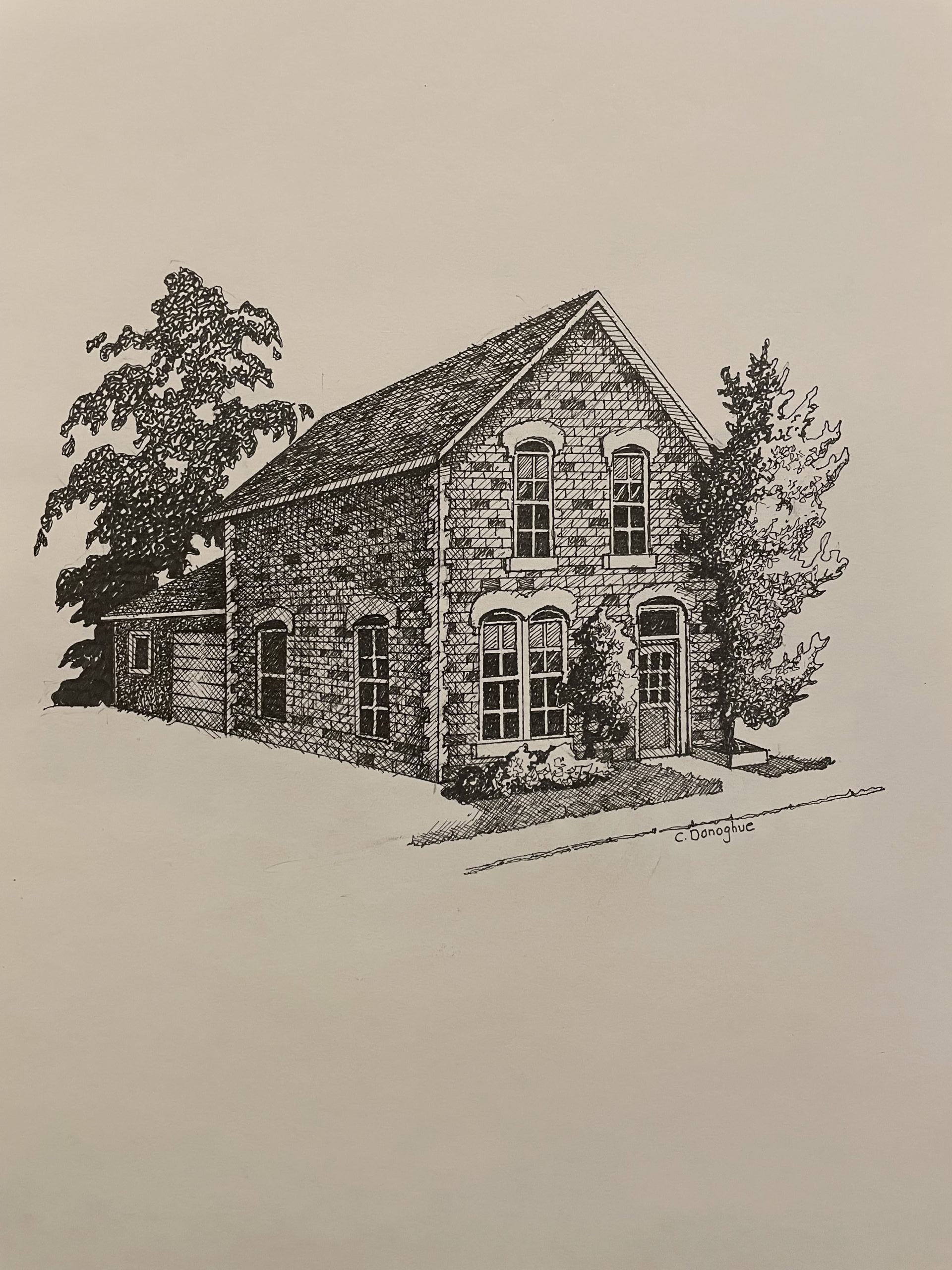
Sketch of 52 Scott Street. Artist Clayton Donoghue
We want to thank contributor William Leslie for his work researching and documenting our local history for future generations, including this story about the Taits. OMAH is proud to have a number of Tait artifacts in the collection and share them with you at this time.
These artifacts can be viewed at the OMAH exhibit GREAT TAIT: The True Story of Orillia’s First Millionaire. Please join us and don’t miss it!
Arthur Peuchen, Canadian Survivor of the Sinking of the Titanic
By Dave Osborne, OMAH member It was 110 years ago this April 15 that the Titanic infamously sank. One of the survivors of that night had ties to Orillia and Simcoe County. Major Arthur Godfrey Peuchen was one of the First-Class passengers on the Titanic...
Booze! Orillia’s Struggle with Drunkenness
by David Town What! No Beer?In 1908 a binding referendum in Orillia outlawed the sale of all alcohol. It was the culmination of a 50-year campaign to “civilize” the town and reduce the violence, crime and domestic hardship that followed drunkenness. For the next 40...
The Rev. Richard Greene’s Electric Car
By Fred Blair The Rev. Canon Richard W.E. Greene served in Orillia for twenty-three years. An inductee in the Orillia Hall of Fame, he made an indelible mark on our community, making it richer due to his passion and commitment. Rev. Greene retired from ministry at St....
OMAH Tribute – Dr. Richard (Dick) Johnston
By Mary Ann Grant, OMAH History Committee There are those in our community who make a huge difference and who enhance the lives of others by their actions and contributions; Dr. Richard (Dick) Johnston is one of those people. Dick Johnston has done this through his...
How an Orillian Facilitated the American Art Pottery Movement
By Fred Blair In 1850, at 37 years old, Frederick married Anna Brownrigg in Cincinnati, Ohio. He was employed as a bookkeeper in Michael and Nimrod Tempest’s Hamilton Road Pottery. In 1865, Frederick purchased the company. He employed from 10 to 31 potters in making...
Two Canadian Winter Olympic Sport Pioneers
By Fred Kallin The first Winter Olympics were held in Chamonix, France, at the base of Mont Blanc in 1924. 2022 is very close to the 100th Anniversary of the those first Winter games. In this article we will recognize a couple of the early Canadian pioneers in the...
The History of the Lumbering Community of Martinville in the Copeland Forest
By Mary Ann Grant, OMAH History CommitteeBackground – An important story to tell David Kennedy, President of the Copeland Forest Association asked Mary Ann Grant, OMAH History Committee member, if she would be interested in researching the history of Martinville, a...
Ornaments from Christmases Past
By Mary Ann Grant Years ago, this writer became a collector of old-fashioned ornaments that fell out of favour with the advent of plastic. Whether antique, vintage or reproduction, they are precious for their beauty and unique design. They are not just the red...
A Tom Thomson Mystery
By Fred Blair If you found the name “Tom Thomson” on the back of a landscape painting, would you think of the Group of Seven? This is a wandering tale about a painting and the possible connections between four landscape painters and Stephen Leacock. In 1888, the...
Private Raymond John Gagnon
By Mary Ann Grant The son of Aimee and Emile Gagnon came to Rathburn, Ontario (Monck Road) from Alberta as a boy. The family operated a small strawberry farm on the 12th Concession of Mara Township. A happy-go-lucky lad, Gagnon enjoyed joking with his siblings and...

